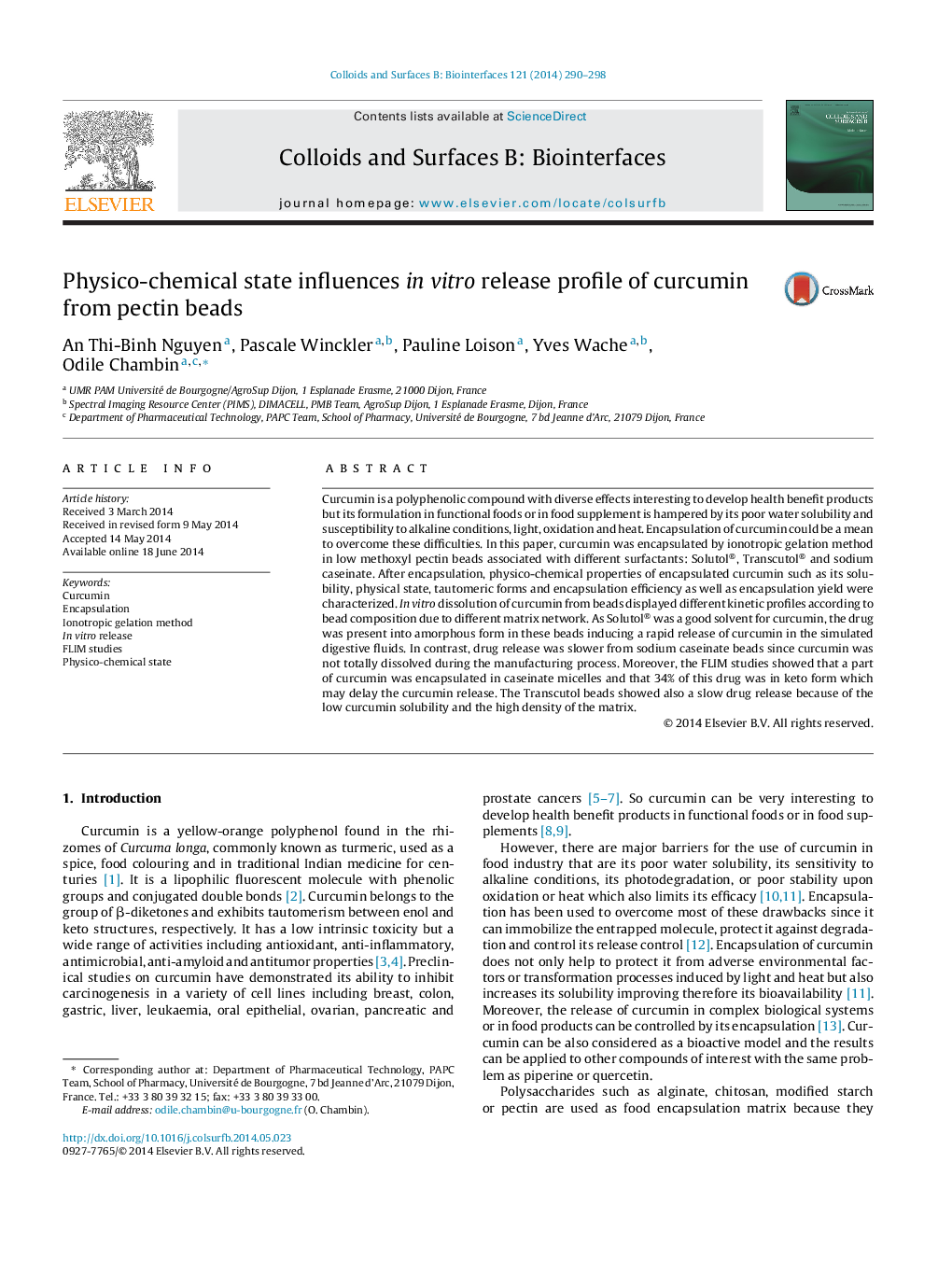| Article ID | Journal | Published Year | Pages | File Type |
|---|---|---|---|---|
| 599635 | Colloids and Surfaces B: Biointerfaces | 2014 | 9 Pages |
•Curcumin was encapsulated in calcium pectinate gel beads with different surfactants.•Encapsulation with surfactants modulated physico-chemical properties of curcumin.•Physico-chemical properties led to different mechanisms of curcumin in vitro release.
Curcumin is a polyphenolic compound with diverse effects interesting to develop health benefit products but its formulation in functional foods or in food supplement is hampered by its poor water solubility and susceptibility to alkaline conditions, light, oxidation and heat. Encapsulation of curcumin could be a mean to overcome these difficulties. In this paper, curcumin was encapsulated by ionotropic gelation method in low methoxyl pectin beads associated with different surfactants: Solutol®, Transcutol® and sodium caseinate. After encapsulation, physico-chemical properties of encapsulated curcumin such as its solubility, physical state, tautomeric forms and encapsulation efficiency as well as encapsulation yield were characterized. In vitro dissolution of curcumin from beads displayed different kinetic profiles according to bead composition due to different matrix network. As Solutol® was a good solvent for curcumin, the drug was present into amorphous form in these beads inducing a rapid release of curcumin in the simulated digestive fluids. In contrast, drug release was slower from sodium caseinate beads since curcumin was not totally dissolved during the manufacturing process. Moreover, the FLIM studies showed that a part of curcumin was encapsulated in caseinate micelles and that 34% of this drug was in keto form which may delay the curcumin release. The Transcutol beads showed also a slow drug release because of the low curcumin solubility and the high density of the matrix.
Graphical abstractFigure optionsDownload full-size imageDownload as PowerPoint slide
